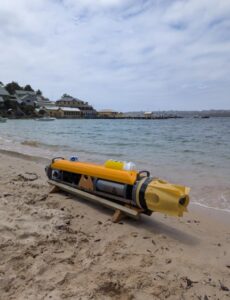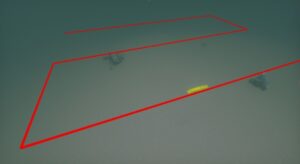Active Perception for Underwater Situational Awareness Using Acoustic and Visual Sensors
Autonomous and unmanned technologies are well established tools that are being used in the marine environment for a variety of tasks, including in scientific exploration, resource extraction, asset management and defence applications. This project aims to further develop the autonomy capabilities of underwater vehicles by integrating data from camera and sonar systems, enabling situational awareness in the marine environment. While sonar can be used to identify, localise, and track targets from afar and in challenging water conditions, cameras can provide a higher resolution and more complete assessment of the target once in visual range.
Recent work in the underwater computational imaging community has seen the development of new perception systems and techniques and these are complemented by developments in machine learning which are demonstrating outstanding performance in tasks such as relative depth estimation from monocular imagery, for example, even in turbid conditions. The aims of this project will be to develop tools and techniques that allow accurate acoustic and visual observations from camera-sonar systems to localise, track and monitor targets of interest in the environment at both close and long ranges.


Research Activities:
To meet the project goals, the following research activities are included:
- Exploiting sonar-based guidance to bring a target within visual range
- Investigating situational awareness frameworks
- Validating the proposed models during deployments of Autonomous Underwater Vehicle (AUV) operating around significant maritime infrastructure
Expected Impact:
This project is a step towards better perception, understanding, and mapping of underwater scenes. Developing new knowledge and concepts will contribute to the foundation science that will enable AUV autonomy. Enabling better navigation and mapping capabilities of underwater robotic platforms will significantly increase situational awareness which will decrease risks during operations, including in challenging conditions.
The outcomes of this project will also be of considerable interest in the context of operations monitoring marine environments for potential naval threats, including covert autonomous systems, but will also be applicable in civilian applications for maintaining offshore assets and in environmental monitoring tasks.
Associated Researchers
-
Stefan Williams
Deputy Director - Technology & Impact
View Bio
